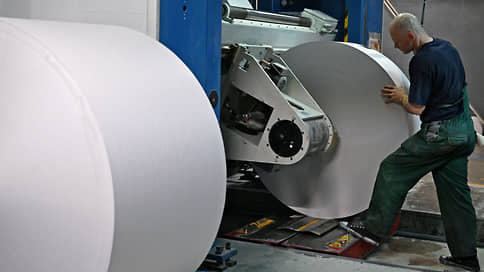Printed results – Newspaper Kommersant No. 27 (7472) of 02/14/2023
[ad_1]

Book printers are reporting revenue and output growth in 2022, helped by a shortage of printing capacity. Newspaper printers, on the other hand, saw a decrease in downloads against the backdrop of a decrease in print runs. The work of the segment was complicated by the fact that all printers were forced to change European materials for analogues from Asia. Market participants’ forecasts for 2023 vary, but everyone is talking about continued problems with spare parts for imported equipment. A new problem for the segment was the leakage of personnel who are poached by defense enterprises.
The revenue of Pareto-Print (one of the largest printing complexes in the Russian Federation, specializes in printing books, belongs to the head of Eksmo-AST Oleg Novikov) in 2022 amounted to 2.79 billion rubles. excluding VAT, which is 8% more than in 2021, “the production of hardcover increased by 20%, to 36 million copies, the growth in total output for all types of products amounted to 6%,” Pavel Arsenyev, the company’s general director, told Kommersant.
The main growth factor, according to Mr. Arseniev, was the shortage of printing facilities. “Publishing houses stood in line for the production of books, the volume of orders broke records,” he said. The deficit began to form at the end of 2021 (see Kommersant dated September 3, 2021) and clearly manifested itself in the first half of 2022. However, in November and December, according to Pavel Arseniev, the volume of orders fell. At the same time, printing prices rose by about 15%. “Logistics has gone up. Due to the fifth package of sanctions, the EU had to switch to suppliers of materials from China and Korea, which raised prices,” Mr. Arsenyev said. Offset paper is now 100% produced in Russia and there is no shortage of it, but there are still problems with coated paper, which was mainly imported from the EU, he said.
Roman Trunov, General Director of Vysshaya Shkola Publishing House OJSC (Smolensk Printing Plant, Tver Printing Plant for Children’s Literature), speaks of an increase in revenue by 18% in 2022, despite the fact that “they produced slightly more products in copies than in 2021.” He also attributes the growth to a temporary shortage of capacity: “When sanctions were imposed on the Russian Federation and there was a risk of a shortage of materials, many publishers began to dramatically increase printing and fill warehouses.” As a result, the top manager clarifies, by the end of the third quarter, the warehouses were full, and there was no shortage of materials, since the industry was able to rebuild.
Book publishers confirm an increase in orders and print shop utilization in the first half of 2022 and a decrease in the second half of the year. “The industry is subject to sharp and unpredictable fluctuations, the entire second half of the year passed with the loading of printing houses about 75% of the norm. The waiting time for an order has decreased,” says Konstantin Lun, production director of the Alpina group. He estimates the growth in the cost of book production against the backdrop of an increase in the cost of materials in 2022 at 30-40%.
Printing houses that specialize in printing periodicals, in turn, are talking about a drop in figures for the year. According to the commercial director of Prime Print (prints newspapers) Andrey Malakhov, the decrease in the company’s revenue in 2022 was 10%, “the reasons are the increase in the cost of consumables, primarily offset ink, plates, the decline in circulation and volumes of printed products by an average of 12%”. In the newspaper segment, according to him, a significant share of printing capacity, given the decline in circulation and volume, has been freed up, which makes the printing houses “fight with each other, reducing prices.”
The forecasts of market participants for 2023 are very different. After the increase in orders in February, Pareto-Print believes that 2023 should be no worse than 2022. At the same time, the Vysshaya Shkola and Prime Print publishing houses do not expect revenue growth. The development of the industry, according to representatives of companies, can be complicated by problems with spare parts for equipment. “Parallel imports from the EU are almost impossible today – each part has a unique identification number, which allows you to track its location,” Andrey Malakhov explains. Roman Trunov adds that the drain of personnel is becoming a deterrent – “it is quite difficult to keep employees against the background of active hiring at military-industrial complex enterprises.”
[ad_2]
Source link





